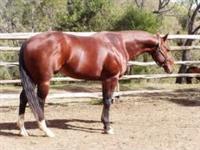
Stable management, grooming, exercise and conditioning
This course follows on from Horse Care I. It focuses on the care of stabled performance horses and covers topics such as:
- Stabling
- Foot Care
- Bedding
- Tack
- Conditioning
The course complements Horse Care I and Horse Care III. It may be studied as a part of a Certificate, Advanced Certificate or Associate Diploma level of equine studies: or it may be studied as a single short vocational level course.
Australian Correspondence Schools, Home Studies - Agricultural School